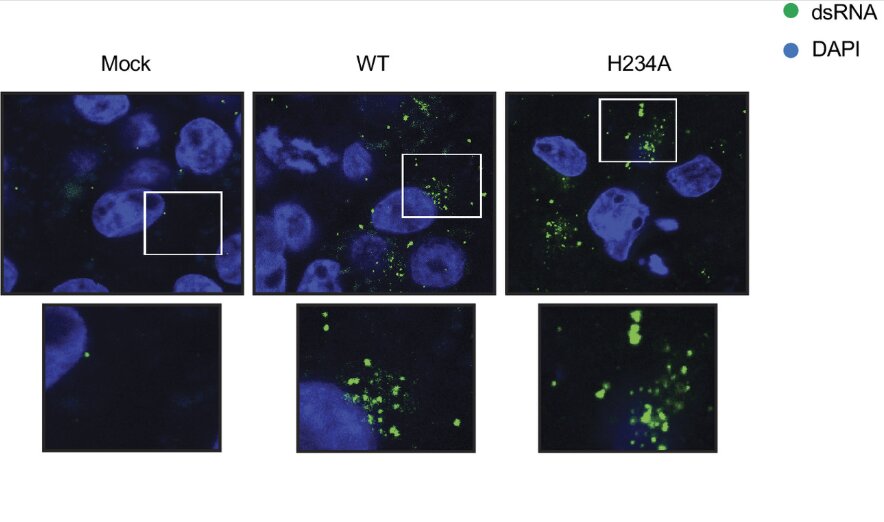In the global race between human immunity and viral invaders, the edge often goes to the one with better tools of deception. A newly published study from researchers at Boston University’s Chobanian & Avedisian School of Medicine reveals one such stealthy weapon used by SARS-CoV-2—the virus behind the COVID-19 pandemic—and it’s a molecular saboteur called nsp15.
This discovery doesn’t just deepen our understanding of how this virus operates—it could lay the groundwork for a new class of antiviral treatments capable of neutralizing not just COVID-19 but future coronavirus threats as well.
The invisible enemy and its hidden tricks
From the beginning of the pandemic, scientists have marveled—and worried—at SARS-CoV-2’s ability to slip past the human immune system with terrifying ease. Before symptoms begin, before the body even knows it’s under attack, the virus often has already replicated enough to spread. But how does it manage this early head start?
Viruses, especially those as successful as SARS-CoV-2, are not passive bits of RNA. They’re molecular burglars equipped with a toolkit of highly evolved proteins known as virulence factors. These specialized proteins disarm alarms, pick cellular locks, and dismantle security systems. In SARS-CoV-2’s case, one of these is the non-structural protein 15, or nsp15.
Now, thanks to the Boston University study published in the Proceedings of the National Academy of Sciences, we’re learning just how crucial nsp15 is to the virus’s success—and how dangerous it becomes when this molecular accomplice is present.
Flying under the immune radar
“Out of the virus’s roughly 30 proteins, we found that nsp15 helps the virus control how much of its genetic material is visible in cells—essentially helping it fly under the radar of the immune system,” explains Dr. Mohsan Saeed, the study’s lead author and associate professor of biochemistry and cell biology at Boston University.
When a virus invades a cell, it typically triggers an immune response by producing double-stranded RNA (dsRNA)—a molecular flare that screams “Intruder!” to the body’s defense system. But nsp15 acts like a silencer. It suppresses the production of dsRNA, muffling the cell’s cry for help. This allows the virus to replicate undisturbed, multiplying silently until it’s too late for the immune system to mount a quick or effective counterattack.
Turning off nsp15 to reveal its role
To understand just how vital nsp15 is, the research team used a clever trick: they genetically modified SARS-CoV-2 to disable nsp15 and watched how it behaved compared to the original virus. What they found was striking.
In lung cells derived from human stem cells—cells that mimic those found in the tiny air sacs most affected by COVID-19—the nsp15-deficient virus replicated poorly. Even more telling, it failed to suppress the cells’ antiviral defenses. Without nsp15’s stealth capabilities, the infected cells fought back much more effectively.
The researchers then turned to a model engineered with the human version of the ACE2 receptor—the same receptor the virus uses to enter human cells. This version of the virus, stripped of nsp15, caused far less severe illness and resulted in dramatically lower mortality, dropping from 75% to about 30%.
In a third experimental model naturally susceptible to SARS-CoV-2, the differences were just as dramatic. Subjects infected with the modified virus had lower levels of virus in their lungs and stronger immune responses, suggesting that nsp15 plays a critical role in not just infection, but also immune evasion and disease severity.
Targeting the virus’s shadow
What makes these findings so powerful isn’t just the insight into how SARS-CoV-2 operates—it’s the potential for action. If nsp15 is essential for helping the virus remain hidden and replicate unchecked, then targeting nsp15 could be the key to stopping the virus in its tracks.
“By revealing how nsp15 works, our findings open the door to designing antiviral drugs that target this protein and block infection,” Saeed said. “Such treatments are urgently needed, especially to protect people with weakened immune systems, who remain at high risk for COVID-19.”
In other words, this tiny viral protein might have just given away the virus’s biggest secret—and its biggest vulnerability.
A universal weakness among coronaviruses
Even more compelling is the fact that nsp15 isn’t unique to SARS-CoV-2. Nearly all known human coronaviruses have some version of it, and many animal coronaviruses do as well. Though small differences exist between the proteins, their structures are remarkably similar, suggesting they serve the same purpose: silencing cellular alarms and ensuring the virus’s safe passage through the host’s defenses.
This universality makes nsp15 a promising target for broad-spectrum antiviral drugs—a class of medication that could work not only against COVID-19, but also against future coronavirus pandemics.
“In studying nsp15, we’re not just learning about this virus—we’re learning how to disarm a whole family of viruses,” Saeed explained. “That’s the kind of information we need if we want to be prepared for the next outbreak.”
A race against time—and evolution
The COVID-19 pandemic has already shown the world how quickly viruses can mutate, spreading across the globe in months and producing new variants with worrying speed. But this study’s focus on conserved viral elements—proteins like nsp15 that don’t change much even as the virus evolves—offers a more enduring path forward.
Rather than chasing after each new variant, scientists could develop treatments that strike at the virus’s core tools—molecular features that are unlikely to mutate because they’re too important to the virus’s survival.
In that way, drugs designed to inhibit nsp15 could become part of our permanent pandemic preparedness kit, able to blunt the impact of new variants and even new coronaviruses long before they become global threats.
Hope from the molecular shadows
As we move further from the dark early days of the pandemic, research like this helps shift the tone from reactive to proactive. The virus is still among us, but we understand it better than ever. Each discovery peels back a layer of its armor, revealing the weak points we can target, the systems we can exploit, and the hope that comes with knowledge.
The story of nsp15 isn’t just one of viral cunning. It’s also a story of scientific perseverance—of researchers digging deep into the molecular shadows to illuminate the tactics of an invisible enemy. And in that light, the future of COVID-19 treatment begins to look not just possible, but inevitable.
As the world watches and waits for the next breakthrough, scientists like Saeed and his team are already writing the next chapter.
Reference: Allen Caobi et al, SARS-CoV-2 nsp15 enhances viral virulence by subverting host antiviral defenses, Proceedings of the National Academy of Sciences (2025). DOI: 10.1073/pnas.2426528122






